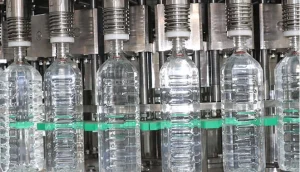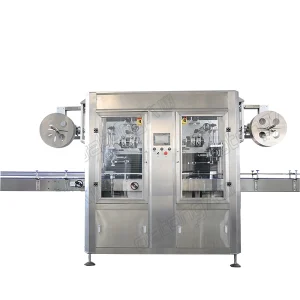The dairy industry demands precision, efficiency, and hygiene when it comes to filling products like milk, yogurt drinks, and flavored dairy beverages. Choosing the right milk filling machine ensures accurate volume control, minimizes product waste, and maintains hygiene standards. With multiple options available, it’s crucial for dairy producers to understand the key factors that influence their choice. This guide outlines the essential considerations when selecting a dairy filling machine to optimize production and ensure product quality.
1. Understanding the Different Types of Dairy Filling Machines
Before selecting a filling machine, it’s important to understand the different types available and their suitability for various dairy products. The choice depends on the viscosity, consistency, and packaging requirements of the product.
A. Volumetric Filling Machines
- Designed to measure exact liquid volumesbefore dispensing them into containers.
- Ideal for flavored milk, yogurt drinks, and other liquid dairy productsthat require precise quantities.
- Equipped with flow meters or load cellsto ensure accuracy and minimize waste.
B. Gravity Filling Machines
- Uses gravity to allow liquid to flow naturally into containers.
- Best suited for low-viscosity dairy productslike milk and light fruit juices.
- A cost-effective solution for high-speed production lines, but less precise than volumetric fillers.
C. Piston Filling Machines
- Utilizes a piston mechanismto pull liquid into a chamber and push it into bottles.
- Perfect for thicker dairy productslike smoothies, milkshakes, and creamy beverages.
- Provides consistent volume controleven for high-viscosity liquids.
D. Overflow Filling Machines
- Fills bottles to a precise level, ensuring uniform appearance across all containers.
- Ideal for premium dairy beverageswhere visual consistency is essential.
- Prevents overfills and product loss, making it suitable for high-value dairy products.

2. Key Considerations When Choosing a Dairy Filling Machine
Choosing the right milk filling machine requires evaluating several critical factors to ensure it meets production needs while maintaining efficiency and hygiene.
A. Product Viscosity and Composition
- Thin liquids(e.g., milk, liquid yogurt) work well with gravity or volumetric fillers.
- Thicker dairy products(e.g., smoothies, flavored milk, or probiotic drinks) require piston or overflow fillers.
- Consider whether the product contains pulp, fruit pieces, or added ingredients, as these require specialized filling mechanisms.
B. Packaging Type and Bottle Compatibility
- Determine the type of bottles, cartons, or pouchesused for packaging.
- Ensure the machine can handle plastic, glass, aluminum, or carton containersof varying sizes.
- Some machines offer multi-format adaptability, allowing seamless transitions between different packaging styles.
C. Production Speed and Capacity
- Small dairy plantsmay benefit from semi-automatic filling machines with moderate output.
- Large-scale dairy manufacturersrequire fully automatic fillers capable of handling high-speed production.
- Machines should have the ability to scale up operationsas production demands increase.
D. Hygiene and Food Safety Standards
- Dairy products require strict hygiene complianceto prevent contamination.
- Look for machines made of stainless steel, which resists corrosion and is easy to sanitize.
- Machines should support CIP (Clean-in-Place) or SIP (Sterilize-in-Place) systemsfor easy cleaning.
E. Automation and Integration with Other Equipment
- Fully automated filling machinesreduce labor costs and improve efficiency.
- Machines should integrate with capping, labeling, and packaging systemsto streamline production.
- Smart controls and touchscreen interfacesallow operators to adjust settings quickly.
3. Advanced Features to Look for in a Dairy Filling Machine
Selecting a machine with the right features can enhance efficiency, reduce downtime, and improve product quality.
A. Precision and Accuracy
- Look for high-precision flow meters or servo-driven filling systemsto ensure accurate liquid measurement.
- Avoid underfilling, which can lead to customer dissatisfaction, and overfilling, which results in product loss.
B. Flexible Filling Options
- Machines with adjustable settingsallow easy switching between different bottle sizes and dairy products.
- Multi-format filling stationsoffer better adaptability for changing production requirements.
C. Energy Efficiency and Sustainability
- Modern machines feature energy-saving motorsand automated shut-off systems to reduce power consumption.
- Choosing an eco-friendly filling machinehelps reduce carbon footprint while lowering operational costs.
D. User-Friendly Interface and Easy Maintenance
- Touchscreen controlsand programmable settings simplify operation.
- Machines with modular componentsallow for quick maintenance and minimal downtime.
- Ensure that spare parts are readily availableand that the manufacturer provides technical support.

4. Manual vs. Automatic Filling Systems: Which One to Choose?
The choice between manual, semi-automatic, and automatic filling systems depends on production volume, budget, and labor availability.
A. Manual Filling Systems
- Best suited for small-scale dairy businessesor specialty dairy products.
- Requires more labor but offers low initial investment costs.
- Works well for limited production runsbut lacks consistency in filling accuracy.
B. Semi-Automatic Filling Systems
- A good mid-range optionthat balances cost and efficiency.
- Requires some operator assistancebut improves speed and consistency compared to manual systems.
- Ideal for growing dairy plantslooking to increase production gradually.
C. Fully Automatic Filling Systems
- Designed for large-scale dairy productionwith high-speed output.
- Reduces the need for manual labor and ensures consistent, precise filling.
- Best for dairy manufacturers aiming for efficiency, hygiene, and long-term cost savings.
5. Evaluating Cost vs. Return on Investment (ROI)
When investing in a milk filling machine, consider both the initial cost and long-term benefits.
A. Factors Affecting Cost
- Machine type (manual, semi-automatic, automatic)
- Filling technology (volumetric, piston, gravity, or overflow)
- Production speed and scalability
B. Long-Term Savings
- Energy-efficient machineslower electricity costs.
- Automation reduces labor costsand improves overall efficiency.
- Hygiene-compliant machinesminimize waste and regulatory risks.
A well-chosen dairy filling machine ensures consistent product quality, increased production speed, and reduced operational costs, making it a smart long-term investment.
Conclusion: Choose Reliable Machinery for Your Dairy Filling Needs
Selecting the right milk filling machine is essential for ensuring efficiency, hygiene, and scalability in dairy production. By considering product viscosity, packaging requirements, automation levels, and energy efficiency, you can invest in a machine that meets both current and future production needs.
At Datong Machinery, we specialize in high-performance filling machines designed to meet the strictest industry standards. Our machines offer precision, efficiency, and long-term reliability, helping you optimize your production process.
Contact Datong Machinery today to find the perfect dairy filling solution for your plant and take your business to the next level!
